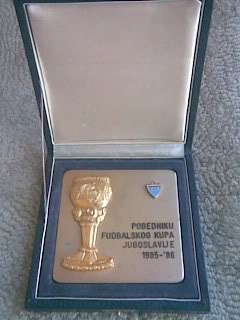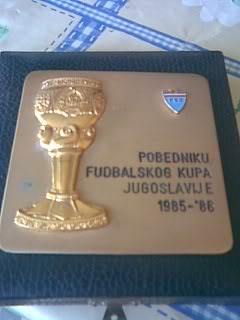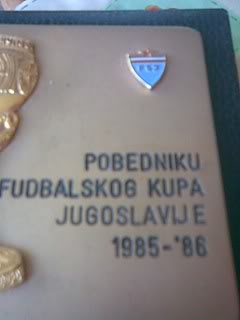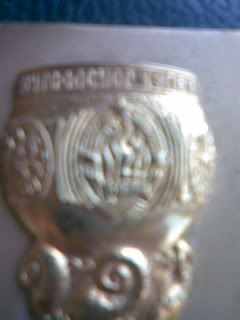Marshal Tito Cup
The Yugoslav Cup (also known as Marshal Tito Cup) was the national football cup competition in SFR Yugoslavia and the second most important national competition in Yugoslav football after the Yugoslav First League. It was established in 1947 and was held every year (with the exception of the 1955–56 and 1974–75 seasons) until 1991 when it was suspended due to the breakup of Yugoslavia. The most successful clubs of the competition were the so-called "big four" of Yugoslav football (Crvena Zvezda, Dinamo Zagreb, Hajduk Split and Partizan) who won 33 out of the 43 seasons held.
Clubs from all tiers of the football pyramid were eligible to enter, with top-flight clubs entering in the Round of 32. Finals were mostly played in Belgrade at the JNA Stadium, which the Yugoslav FA intended to become the "Yugoslavia's Wembley". Up until 1969 finals were a single game event in Belgrade, except in 1950 and 1951 when two ties were played, and in 1967, when the single game final was played in Split. In 1969 the rule to play two-legged finals in case one of the finalists came from Belgrade was introduced (with the second leg always played in Belgrade). This lasted until 1988 when the rule to always play a single game final was reinstated. Although the competition was open to clubs from all levels (and even teams formed by JNA garrisons or large factories), only a handful of teams outside the first league succeeded in reaching the finals. The only club from outside the top level to have won the cup was Borac Banja Luka in 1988.
Cup finals were always scheduled to coincide with national holidays. Until 1955 the finals were held on or around 29 November, the Republic Day (which commemorated the establishment of the post-war socialist Yugoslavia). After 1955 the finals were held around 25 May, the Youth Day (which was also Josip Broz Tito's birthday). After the final game, the captain of the winning team would be presented with the trophy by an emissary (usually high-ranking military officials) sent on behalf of Josip Broz Tito.
Trophy
The trophy was designed in 1946 by Branko Šotra from Stolac, a Bosnian painter and sculptor who was dean of the Belgrade Academy of Fine Arts. The trophy was designed as a sculpture with a large five-point star covering the base and decorated by folklore-inspired carvings around the outer edge. Five flaming torches are depicted rising from the star and supporting the bowl on top. The bowl itself is decorated with seven rosettes forming a wreath which hold the Yugoslav coat of arms. The inscription around the outer edge of the bowl reads Pobjedniku fudbalskog kupa FNR Jugoslavije — Tito (English: To the winner of the FNR Yugoslavia Football Cup - [by] Tito).
The trophy is 47 cm high and the diameter at the base is 23 cm. The bowl on top has a diameter of 18 cm. The trophy was made at a Belgrade foundry called Plastika out of solid silver and weighs 16.8 kilograms. The name of the winning club and the winning year would be engraved on the trophy itself and the winning club would hold on to it until next year's final. After passing it on to the next year's winners, each club would be issued with a smaller version of the original trophy commemorating their cup win.
After the last cup final on 8 May 1991, the trophy was presented to Hajduk players, who took it to Split, where it mysteriously disappeared in the political turmoil in the early 1990s. It finally surfaced again some 17 years later in November 2008, when it turned out that Hajduk's former kit manager Juko Strinić had hidden it when the Croatian War of Independence began in 1991 in order to save it from destruction and to prevent it from being sent back to Belgrade after the breakup of Yugoslavia. Upon recovery, the trophy was put back on display at Poljud, positioned as a centre piece on Hajduk's Yugoslav trophies shelf, where it resides today.









 Shopping Cart
Shopping Cart